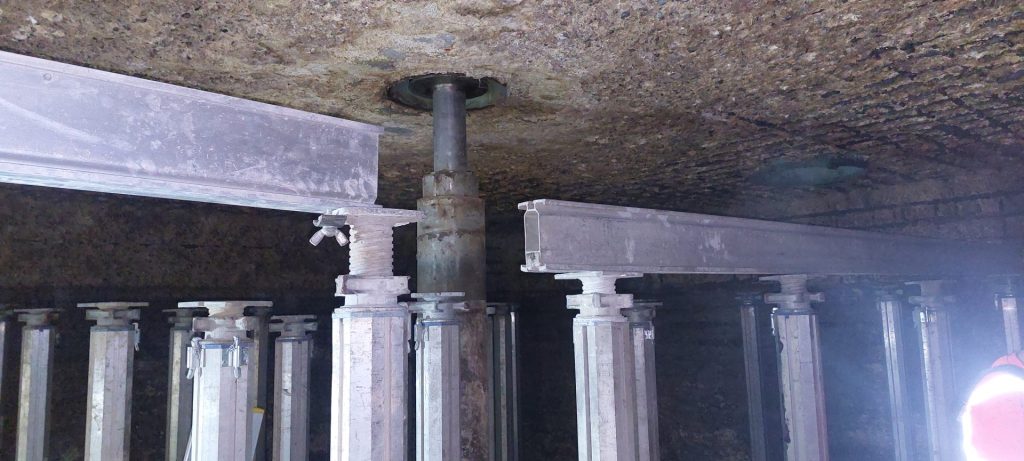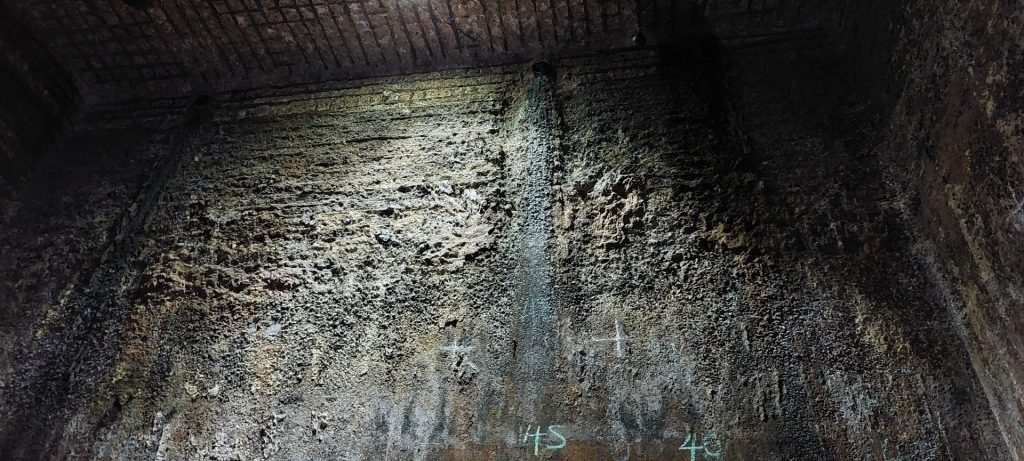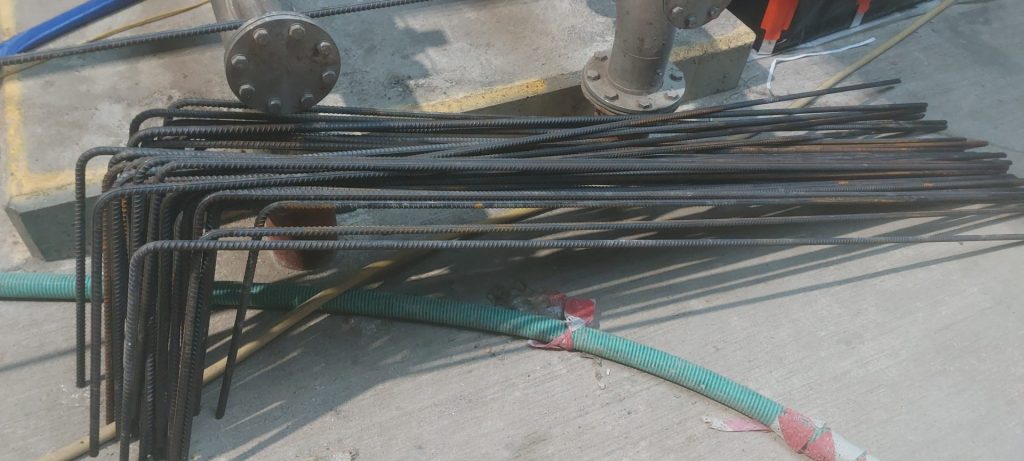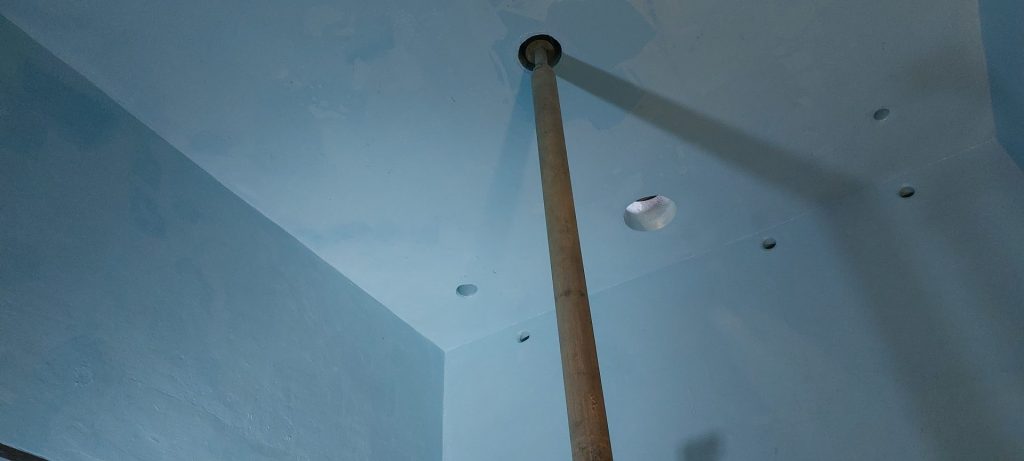Because of the access arrangements the works had to be completed in two visits. Following the concrete repairs to the top section heating and dehumidification was introduced to properly dry out the cementitious materials and ensure the best climatic conditions for coating application.
All surfaces to be coated were double primed, with the first primer coat being diluted 50% to aid penetration into the substate for maximum adhesion. The second coat was applied without dilution to apply a thicker film to better seal the surface. The reason for double priming is that when applying heated plural sprayed tank linings such as Raven Lining 405 this reduces the outgassing and potential for pin holing from the concrete as concrete itself contains lots of entrapped air pockets which when heated force air through the uncured coating film.
At the termination point from the works at the top section an anchor rebate was cut to ‘tuck’ the tank lining into as per best practice and the manufacturers recommendations.
Raven Lining 405 tank lining was then spray applied using our own plural spray equipment to a nominal thickness of 3mm, confirmed during application with frequent wet film thickness readings.

























